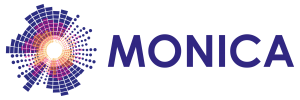During 2018, MONICA organised three hackathons: one in Leeds (UK), one in Roskilde (Denmark) and one in Torino (Italy) with the participation of developers, entrepreneurs, start-ups and students.
The winners received a customised Business Growth Programme to further develop and brand their winning solutions. For the hackathon winner in Leeds this has led to participation in the SoundTech Accelerator Program and for the Roskilde winner further seed funding has been secured through Innobooster. The entrepreneurs from Torino are currently developing their business idea with the support of a local agency.
The hackathons were organised to promote new market openings for start-ups through the use of MONICA knowledge and data e.g. from the Torino Collective Awareness Platform and the results reflect emerging IoT market trends: hearables for a consumer market and a data-driven behavioural approach to urban planning.
Hearables for a consumer market
The winning entry of the MONICA hackathon in Leeds, UK belongs to the ‘better hearing’ segment as a personal, augmented audio device giving its user control of the auditory environment. In the context of MONICA, stadium visitors are able to control their auditory environment during games thereby making sporting events safer and more inclusive to all.
As opposed to in-ear devices, on-ear devices seek to free the ear canal, thereby enabling its wearer to be more aware of what goes on in the surroundings while listening to some form of sound. The winning entry of the MONICA hackathon in Roskilde, Denmark is such a device. It is a wireless bone-conduction hearable based on sending sound waves in the form of vibrations directly to the human skull so that the user is spatially aware at all times. It is aimed at people wanting to ‘listen to their surroundings and the digital world simultaneously in all sound environments of their daily life with superior sound quality for different hearing profiles’ (source: www.auricle.io).
In the context of MONICA, three use cases were presented that aim to enhance communication at events:
- Security personnel can be spatially aware at all times, not having to rely on a headset which obstructs the ear canal;
- Sound engineers can perform their operations, such as live sound mixing, and communicate at the same time without it interfering with their sound perception;
- Staff members can use the solution as a regular communications device connected to a body-worn two-way radio.
Data-driven behavioural approach to urban planning
Smart cities are increasingly using data to understand and change human behaviour as part of the urban planning. The move from monitoring and analysis of data (supply-side data focus) to communication and behavioural change (demand-side people focus) is a necessary next step of the smart city in solving nightlife challenges where public spaces have to accommodate for both partying crowds and residential homes.
The winning solution at the Torino hackathon is an example of using MONICA sound level data to motivate nightclubbers and bar owners in the Torino nightlife to change behaviour. The solution displays monitored sound levels on tablets in bars and media totems in the streets to increase awareness of the noise issues. If noise levels are too high, actions are initiated by the application and again when the crowd manages to reduce the sound levels. To further promote reduction of noise, different economic incentives are also introduced.
Currently, the entrepreneurs are developing a business idea for pubs and restaurants in the nightlife districts based on MONICA platform and with the support of the Agency for Local Development of San Salvario District.
